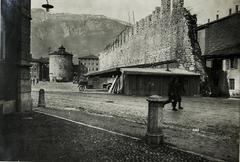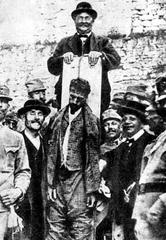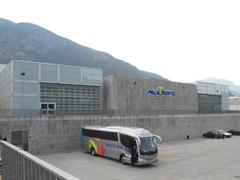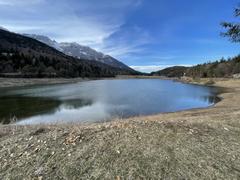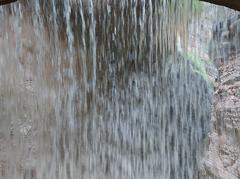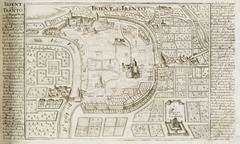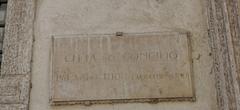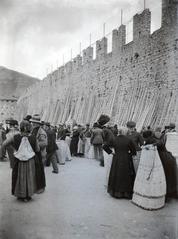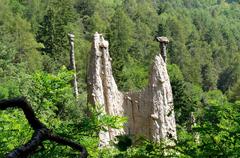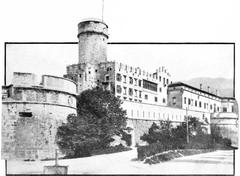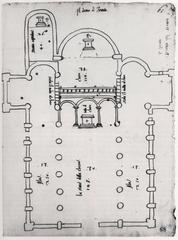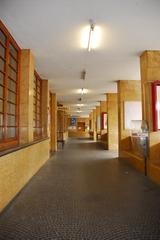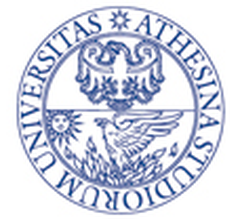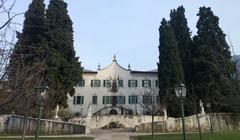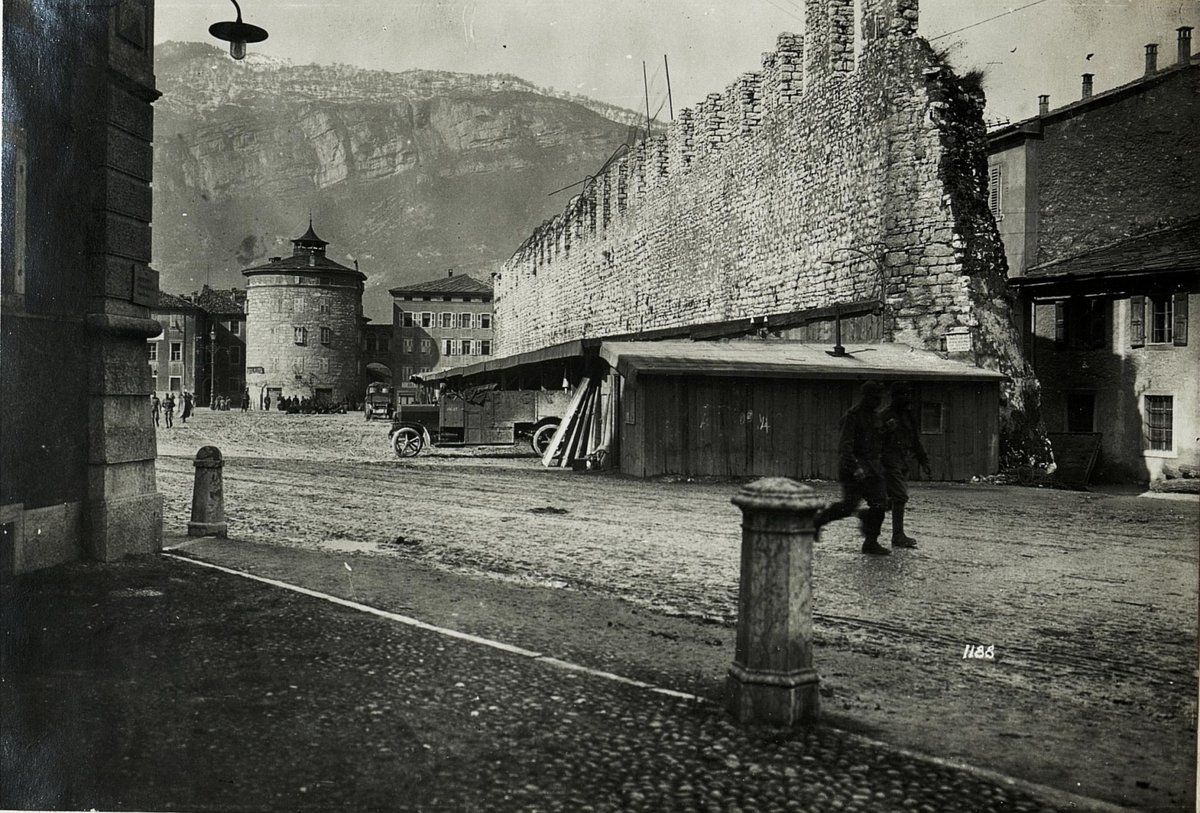
Walls of Trento: Visiting Hours, Tickets, and Historical Sites in Trento, Italy
Date: 14/06/2025
Introduction
The Walls of Trento—locally known as the “Mura di Trento”—stand as a living chronicle of the city’s remarkable journey from ancient Roman stronghold to a thriving Renaissance hub. Winding through Trento’s picturesque historic center, these fortifications are tangible witnesses to centuries of military, political, and cultural development. Today, visitors can explore surviving sections, iconic towers, and scenic promenades, gaining insight into Trento’s pivotal role as a crossroads between Italy and Central Europe. This guide provides comprehensive information on the history, architecture, visiting hours, tickets, accessibility, tour options, and practical tips for exploring one of the Alps’ most captivating historical sites (buonconsiglio.it, italia.it, visittrentino.info).
Historical Overview
Early Origins and Medieval Expansion
Trento’s defensive walls have roots stretching back to the Roman settlement of Tridentum, built to control movement along the Adige River valley and protect against invasions (italia.it). The most significant construction took place during the Middle Ages, from the 12th to the 15th centuries, as Trento became the seat of the powerful Prince-Bishopric. The city’s strategic location at the intersection of Italian and Central European trade routes demanded robust fortifications.
The medieval circuit enclosed the nucleus around Piazza Duomo and the Cathedral of San Vigilio, following the river’s contours and the natural topography. Defensive towers, sturdy stone ramparts, and gates like Porta San Martino and Torre Aquila not only protected the city but also asserted its autonomy and prestige (buonconsiglio.it).
Renaissance and Early Modern Transformations
During the Renaissance, especially under Prince-Bishop Bernardo Clesio, the walls were reinforced and modernized to withstand emerging artillery technologies. The integration with the Castello del Buonconsiglio reflected both military necessity and civic grandeur (buonconsiglio.it). Events such as the Council of Trent (1545–1563) further elevated the city’s profile, with the walls providing security for international clergy and dignitaries (visittrentino.info).
Decline and Preservation
With the decline of feudal powers and advances in warfare, the walls gradually lost military relevance. The Napoleonic era and 19th-century Austrian rule saw partial demolition for urban expansion, but significant remnants survive—most notably at Piazza Fiera and near the Castello del Buonconsiglio (understandingitaly.com). Modern restoration programs have stabilized and integrated these structures into the city’s green spaces and public life.
Architectural Features and Surviving Structures
- Piazza Fiera Walls: The best-preserved stretch, featuring crenellated ramparts and towers, forms the eastern boundary of the old city. Piazza Fiera is a lively locale for markets and festivals.
- Torre Aquila: Accessible via Castello del Buonconsiglio, this tower is renowned for its International Gothic frescoes, the “Cycle of the Months,” which depict medieval life.
- Torre Verde: Distinctive for its green-tiled roof, this tower marks the northern limits of the walls and is visible near the Adige River.
- Torre Vanga: Situated near the railway station, this robust tower was part of the southwestern defenses.
- Via Dietro le Mura: This street traces the walls’ southern edge, offering close-up views of medieval masonry integrated with modern buildings.
- Roman Foundations: Archaeological sites such as Via Prepositura and Piazza Cesare Battisti reveal layers of Roman, medieval, and Renaissance walls (archaeologymag.com).
Visiting Hours and Tickets
- Walls of Trento (Outdoor Sections): Accessible 24/7 and free of charge, especially at Piazza Fiera and along Via Dietro le Mura. Some adjacent parks operate from 8:00 AM to sunset.
- Castello del Buonconsiglio (including Torre Aquila):
- Hours: Tuesday–Sunday, 10:00 AM–6:00 PM (last admission 45 minutes before closing; check buonconsiglio.it for seasonal updates).
- Tickets: Approximately €12 for adults, with reductions for students and seniors. Tickets include access to the castle, towers, and wall sections. Online booking is recommended.
- Guided Tours: Local tourism offices and private operators offer guided walking tours (1.5–2 hours, €15–€25 per person; some free/donation-based), covering the walls, castle, and historic center. For group or thematic tours, advance booking is advisable (visittrentino.info).
How to Get There
- By Foot: Most visitors start at Piazza Duomo in the city center; the walls at Piazza Fiera are less than 10 minutes away.
- By Public Transport: Trento’s main train station is a 10-minute walk from Piazza Fiera.
- By Car: Parking is available at Piazza Fiera’s underground lot and other city center locations (Trento Tourist Office).
Accessibility
- Wheelchair/Stroller Access: The area around Piazza Fiera and most promenades are flat and paved, suitable for wheelchairs and strollers. Some towers and steep or cobblestone sections may be challenging.
- Rest Areas: Benches and shaded spots are available, especially in Piazza Fiera.
Visitor Amenities
- Restrooms: Public facilities near Piazza Fiera and in adjacent parks.
- Cafés and Restaurants: Numerous options are available within a short walk, particularly around Piazza Duomo and Via Cavour.
- Shops and Markets: Artisan shops and seasonal markets often set up near the walls during festivals and the Christmas market (The Crazy Tourist).
Events and Special Experiences
- Christmas Market: From mid-November to early January, Piazza Fiera transforms into a festive market with the medieval walls as a backdrop (The Crazy Tourist).
- Local Festivals: The Feste Vigiliane and other events use the walls as venues for concerts, reenactments, and exhibitions, especially during summer and autumn (Trentino.com).
Practical Tips
- Wear Comfortable Shoes: Most exploration is on foot; some paths are cobbled.
- Bring Water: Especially in summer.
- Check Event Schedules: Plan ahead for markets or festivals (visittrentino.info).
- Weather: Dress in layers in winter; bring rain protection in spring/autumn.
- Photography: Best light is in the early morning or late afternoon; consider panoramic shots from the castle or Sardagna cable car (Miss Tourist).
Nearby Attractions
- Castello del Buonconsiglio: A short walk from the walls; houses frescoes, exhibitions, and city views (buonconsiglio.it).
- Cathedral of San Vigilio: The city’s main church, rich in art and history.
- Piazza Duomo: The heart of Trento, surrounded by cafés and shops.
- Roman Underground Remains: Accessible via guided tours and museums (understandingitaly.com).
Frequently Asked Questions (FAQ)
Q: Are tickets required to visit the Walls of Trento?
A: No, the outdoor wall sections are free and accessible at all times. Tickets are required for the Castello del Buonconsiglio and some museum exhibits.
Q: What are the visiting hours for the Walls of Trento?
A: Outdoor sections are open 24/7. Parks and gardens may have posted hours, typically 8:00 AM to sunset.
Q: Are guided tours available?
A: Yes, local operators and the tourist office offer guided tours covering the walls and historic center. Advance booking is recommended.
Q: Is the site wheelchair accessible?
A: The Piazza Fiera area and most promenades are accessible. Some towers and cobblestone paths may be challenging.
Q: Can I combine the visit with other attractions?
A: Yes, the walls are integrated into the city’s historic center, making it easy to combine with visits to the castle, Duomo, and museums.
Summary and Final Recommendations
The Walls of Trento embody centuries of resilience and cultural richness, offering an unparalleled window into the city’s strategic and artistic evolution. Surviving structures such as the Piazza Fiera ramparts, Torre Aquila, and Torre Verde, together with the integration into Castello del Buonconsiglio, invite immersive exploration and reflection. Thoughtful preservation has woven these historic defenses into the city’s parks, festivals, and daily life, ensuring they remain a vibrant symbol of Trento’s identity.
Whether you’re a history buff, a cultural traveler, or simply seeking scenic walks in the Alps, the Walls of Trento promise a memorable journey through time. Make the most of your visit with self-guided walks, guided tours, and participation in seasonal events. For seamless planning, download the Audiala app for interactive guides and maps, and consult official tourism sources for the latest updates (understandingitaly.com, visittrentino.info).
Useful Resources and Further Reading
- Walls of Trento: Visiting Hours, Tickets, History & Must-See Historical Sites in Trento, 2025 (buonconsiglio.it)
- Visiting the Trento City Walls: History, Tickets, and Travel Tips, 2025 (visittrentino.info)
- Exploring the Walls of Trento: Visiting Hours, Tickets, and Historical Sites Guide, 2025 (understandingitaly.com)
- Walls of Trento Visiting Hours, Tickets & Practical Tips for Exploring Trento’s Historic Sites, 2025 (The Crowded Planet)
- Iron Age Necropolis in Trento, Italy, 2025 (archaeologymag.com)
For more travel resources, insider tips, and self-guided tours, download the Audiala app and follow us on social media. Enhance your visit to Trento’s historic walls and discover the best of Alpine Italy!
